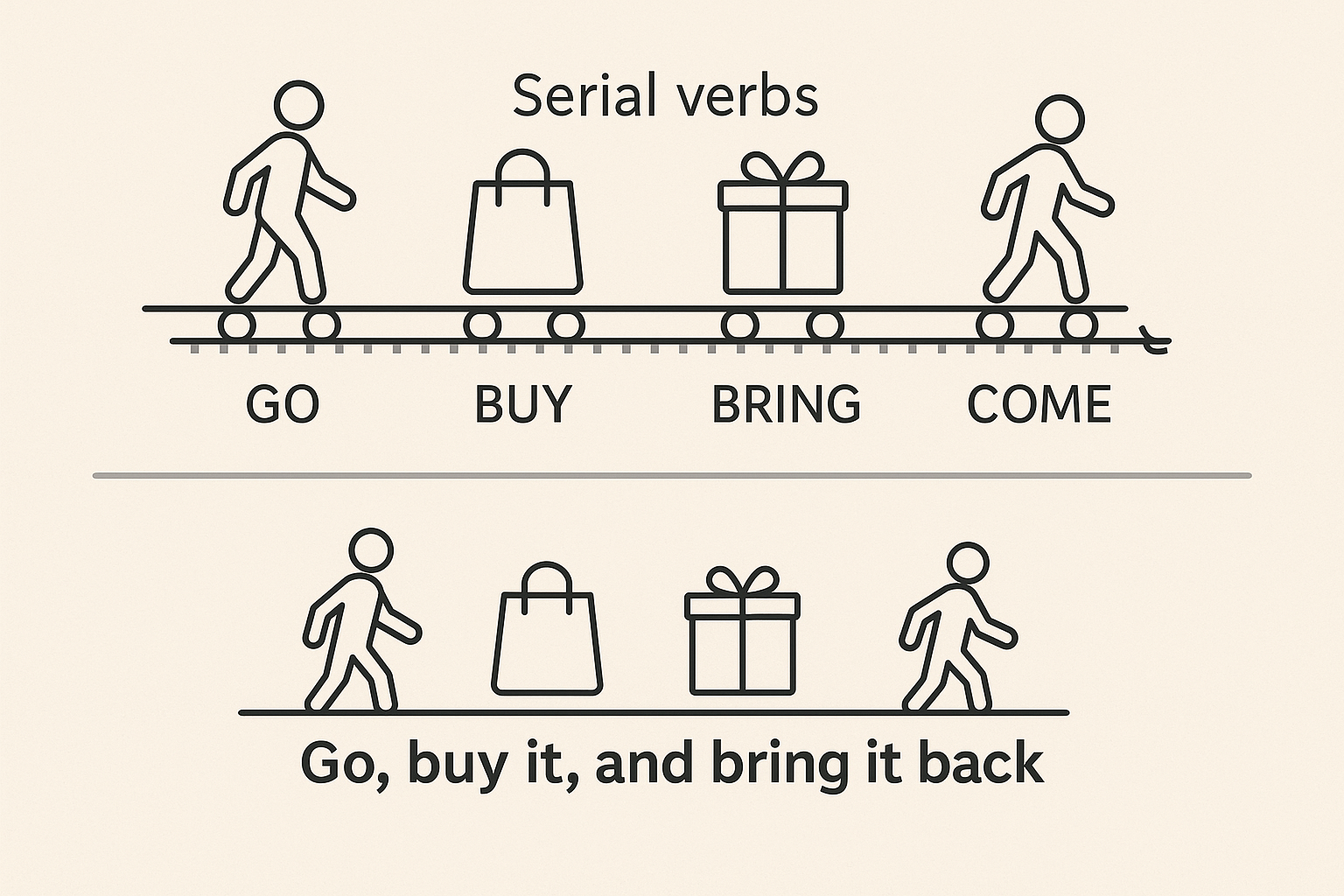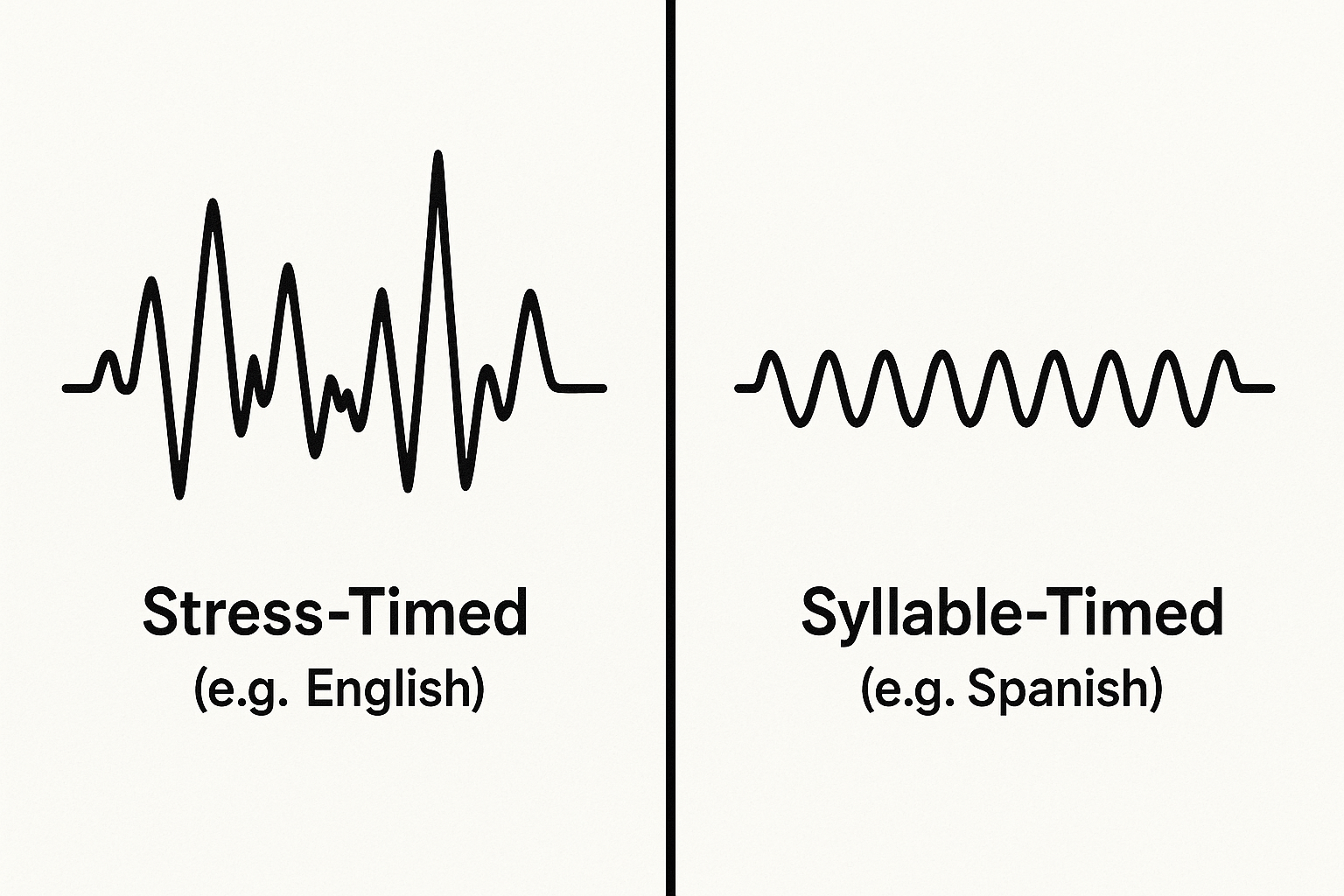Imagine saying this in English: “She ran go school.” Or how about: “I take knife cut bread.” It sounds broken, like something a toddler or a beginner language learner might say. We’d instinctively correct it to “She ran to school” or “I cut the bread with a knife.” But what if I told you that in hundreds of languages around the world, from West Africa to Southeast Asia to the Caribbean, this “broken” structure is not only correct but sophisticated, elegant, and deeply logical?
Welcome to the fascinating world of Serial Verb Constructions (SVCs), a grammatical feature that elegantly packs a whole sequence of actions into a single, seamless clause.
So, What Exactly is a Serial Verb Construction?
At its core, a serial verb construction is a sequence of two or more verbs strung together in a single clause. These verbs work together to describe a single, complex event. They typically share the same subject and aren’t connected by conjunctions (like “and,” “but,” “or”) or subordinators (like “to”).
Think of it like a multi-verb combo move. Instead of describing several distinct actions, you’re describing one fluid event with several components. Key features usually include:
- Two or more verbs in a series.
- No connecting words between them.
- They share a common subject (and often a common object).
- They have the same tense, aspect, and polarity (you can’t negate just one verb in the chain).
This structure forces us to reconsider our English-centric idea that one clause should have only one main verb.
Let’s See it in Action
Examples make this concept click. Let’s take a trip around the world to see how SVCs work.
Thai (Southeast Asia)
Thai is a classic example of a serializing language. The title of this post, “Go Buy Bring Come,” is a direct nod to how Thai can work.
Consider this sentence:
เขา ไป ซื้อ หนังสือ มา
(kăo bpai séu năng-sĕu maa)
Literally, this breaks down as:
He | go | buy | book | come.
A natural English translation would be something like, “He went to buy a book and brought it back.” The Thai version, however, is far more efficient. The verbs are listed in chronological order: the going, the buying, and the coming back. It’s a complete, self-contained story of a shopping trip in just five words.
Akan/Twi (West Africa)
The Kwa languages of West Africa are famous for their extensive use of SVCs. Let’s look at an example from Akan (Twi), spoken in Ghana:
Kofi de poma no bɔɔ ɔkraman no.
Word for word, this is:
Kofi | take | stick | the | hit-PAST | dog | the.
In smooth English, we’d say: “Kofi hit the dog with the stick.” Notice how Akan uses the verb de (“to take” or “to hold”) where English needs a preposition (“with”). The action of taking the stick and the action of hitting are conceptualized as one single event: “take-hit.”
Nigerian Pidgin (Creole Language)
SVCs are also a hallmark of many Creole languages, which often draw grammatical features from their African substrate languages. In Nigerian Pidgin:
Carry di plate come.
This means exactly what it sounds like: “Bring the plate here.” It’s a command combining two actions:
Carry | the plate | come.
The first verb, carry, describes the main action, while the second verb, come, adds the crucial direction of that action—towards the speaker.
The Logic Behind the Series
Far from being primitive, SVCs are a highly efficient grammatical tool that can perform several different functions, often replacing prepositions, adverbs, and entire subordinate clauses.
1. Sequencing Actions
The most intuitive function is showing a chronological sequence of events, as we saw in the Thai example. The order of the verbs mirrors the order of the actions in the real world.
- Go buy drink: You go first, then you buy, then you drink.
2. Expressing Manner, Direction, or Instrument
Often, a second or third verb in the series doesn’t add a new event but modifies the main verb, much like an adverb or prepositional phrase in English.
- Direction: He ran go. (He ran away.) vs. He ran come. (He ran towards here.)
- Manner: He sit read. (He is reading while sitting.)
- Instrument: She take knife cut. (She cut with a knife.)
3. Indicating Result
A very common pattern is for the second verb to show the result of the action of the first verb.
- He push me fall down. (He pushed me, and as a result, I fell down.)
- She beat am die. (She beat him to death.)
This “action-result” construction is incredibly economical. English needs two separate clauses (“She beat him until he died“) to express the same idea.
What Serial Verbs Reveal About Language and Thought
The existence of SVCs is a powerful reminder that there is no single “right” way for a language to be structured. Grammar isn’t a universal template; it’s a diverse toolkit, and different languages use different tools to achieve similar communicative goals.
The prevalence of SVCs also offers a window into event conceptualization. Speakers of serializing languages may be more inclined to view a series of tightly-knit actions (like going somewhere, buying something, and returning) as one single, holistic event rather than a chain of separate events linked by conjunctions. The grammar reflects a worldview where actions flow into one another.
So the next time you hear a construction that sounds “wrong” by English standards, pause and consider the possibility that you’re not hearing a mistake. You might be hearing a completely different, yet perfectly logical, system for describing the world—one where verbs can line up, hold hands, and tell a whole story, all in a row.







